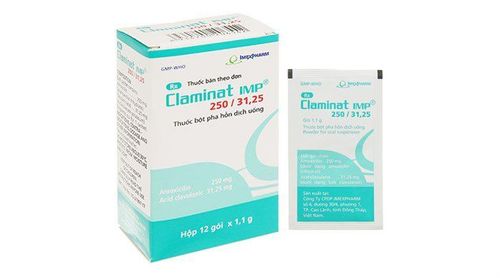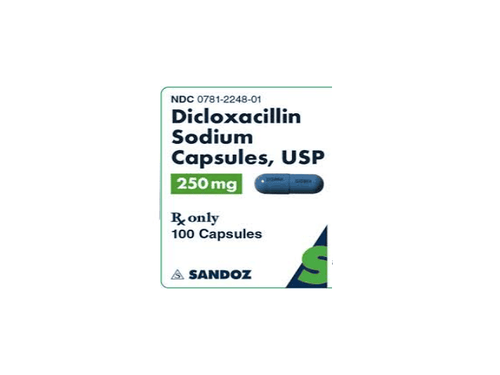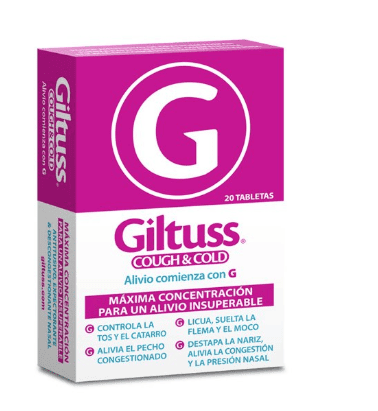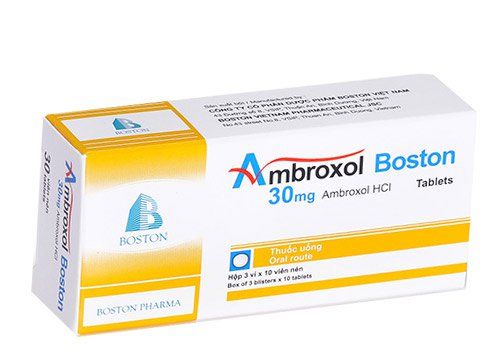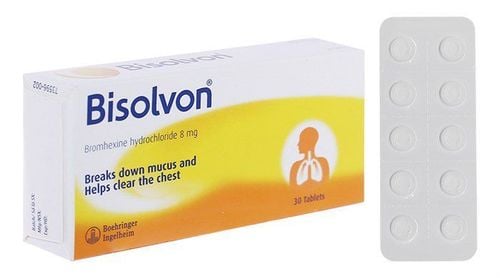This is an automatically translated article.
Drug Aminophylline is a bronchodilator, used to treat and prevent symptoms of bronchial asthma, cardiac asthma, asthma,... During treatment with Aminophylline, patients need to strictly adhere to instructions for taking medications recommended by your doctor.
Aminophylline belongs to a group of drugs that act on the respiratory tract (bronchodilators), also known as Theophylline ethylenediamine. Aminophylline is prepared in the form of a solution for intravenous injection, with the main active ingredient being Aminophylline hydrate 25mg/ml, 10ml tube capacity.
1. Indications and uses of Aminophylline
1.1 Indications for use of the drug Aminophyllin e Aminophylline is usually indicated for use in the following cases:Treatment of severe bronchial asthma. Heart asthma treatment. Used in bronchospasm and chronic bronchitis. Helps treat decompensated heart failure, angina on exertion. Reduces paroxysmal nocturnal dyspnea. Treatment of atropin-resistant atrioventricular block develops on an ischemic basis. Relieves edema or cerebral circulatory disturbances caused by atherosclerosis. Treatment of microcirculation disorders due to high blood pressure. Treatment of claudication. 1.2 Uses of drug ingredients Aminophylline Drug ingredients Aminophylline is Aminophylline hydrate which is mainly used to prevent and treat symptoms of shortness of breath, wheezing caused by chronic lung disease. Such as emphysema, asthma, chronic bronchitis. Aminophylline belongs to the xanthine group, works on the basis of the mechanism of muscle relaxation, ventilation in the respiratory tract to help improve respiratory symptoms, and at the same time reduce lung irritation. In addition, Aminophylline also has the ability to well control symptoms as well as respiratory problems that affect patients' quality of life.
The Aminophylline component in the drug does not have an immediate effect, so the drug is not recommended for use in cases of acute asthma attacks. In this case, the doctor may prescribe a strong inhaler, such as Albuterol, to the patient for quick relief of acute asthma attacks or shortness of breath while taking Aminophylline. Ideally, patients should carry a quick-acting inhaler with them to prevent an acute asthma attack that cannot be controlled with Aminophylline.
2. Dosage and how to use Aminophylline
2.1 Dosage of Aminophylline The dose of Aminophylline will be determined specifically based on the age and medical condition of each patient:
Adult dose
Intravenous dose of Aminophylline is calculated based on body weight, drug Not recommended for use in infants under 6 months of age.
Treatment of bronchospasm: Slow intravenous injection of Aminophylline 6mg/kg body weight at a rate less than 25mg/min. Depending on the patient's health condition, the maintenance dose of Aminophylline can be used for the next 12 hours, specifically intravenous dose of 0.7mg/kg/hour, reduced to 0.5mg/kg/hour after 12 hours. Dose for patients already receiving Theophylline: Adjusting the loading dose every 0.5mg/kg will result in an increase in serum drug concentration of 1mcg/ml. Serum concentrations of Theophylline should be determined prior to administration of a loading dose. If the concentration cannot be determined, the patient can be given a dose of 3.1mg/kg. Dose for children
Dosage for acute bronchospasm: Intravenously touch loading dose of 6mg/kg body weight at a rate of less than 25mg/min. The maintenance dose may be administered for 12 hours depending on the patient's condition. For children aged 6 months to 9 years, the dose can be given intravenously at 1.2mg/kg/hour and reduced to 1mg/kg/hour after 12 hours. For children 9-16 years old, the dose can be 1mg/kg/hour intravenously and reduced to 0.8mg/kg/hour after 12 hours.
Dose for other subjects
Treatment of acute bronchospasm in the elderly and cardiac arrhythmias: Use 0.6mg / kg / hour, after 12 hours reduce to 0.3mg / kg / hour. Treatment for people with liver disease or congestive heart failure: Use 0.5mg / kg / hour, after 12 hours reduce to 0.1 - 0.2mg / kg / hour. Elderly, patients with renal/hepatic impairment: A dose reduction and frequent monitoring of serum Aminophylline levels may be considered. 2.2 Instructions for the correct use of Aminophylline Aminophylline is administered intravenously at a very slow rate (about 20 - 30 minutes) without dilution or by slow intravenous infusion after reconstitution of a large volume of infusion (speed not exceed 25mg/min).
2.3 Treatment of Aminophylline Overdosage When taking an overdose of Aminophylline, patients may experience symptoms of Aminophylline toxicity, leading to nausea, loss of appetite, vomiting, insomnia, diarrhea, restlessness. , irritation and headache. In addition, patients with Aminophylline overdose may also have agitated manic behaviors, extreme thirst, frequent vomiting, tinnitus, low-grade fever, arrhythmias, and palpitations. In particular, people who have taken oral Theophylline when intravenous overdose of Aminophylline can cause fatal arrhythmias.
When any signs of suspected overdose of Aminophylline occur, the patient should promptly notify the doctor or go to a medical facility for treatment.
3. Possible side effects when taking Aminophylline
During treatment with Aminophylline intravenous drug, patients may experience some of the following side effects:
Agitation, restlessness, tachycardia, nausea/vomiting. Severe allergic reactions, eg exfoliative dermatitis (rare). Metabolic disorders, such as hypophosphataemia, hypokalemia/natremia. Insomnia, anxiety, or frantic or delirium behavior with high doses of Aminophylline. Confusion, headache, dizziness, hypoventilation or tremor. Taking higher doses may cause palpitations, convulsions, arrhythmias, hypotension, diarrhea, abdominal pain, gastrointestinal bleeding or gastroesophageal reflux. Painful when injected intramuscularly, the pain can last several hours. Higher doses of Aminophylline can cause thirst and increase body temperature.
4. Some important notes when taking Aminophylline
4.1 In what cases is Aminophylline contraindicated? Aminophylline is not recommended for use in the following cases:
People who are hypersensitive or allergic to Ethylenediamine, Caffeine, Theobromine or any other substance in the drug. Intravenous Aminophylline should not be given to children under 6 months of age. Do not take Aminophylline while taking other Xanthine medicines. Do not use in patients with acute disorders of porphyrin metabolism. Aminophylline is contraindicated in patients with peptic ulcer disease, epilepsy or uncontrolled convulsions. 4.2 What precautions should be taken while using Aminophylline? During treatment with Aminophylline, patients should note the following:
Aminophylline should be administered intravenously at a slow rate of no more than 25mg/min. Serum concentrations should be regularly monitored, especially at the beginning of treatment with Aminophylline. Aminophylline should be given with caution to people over 55 years of age. Theophylline toxicity should be closely monitored in patients with heart, liver disease or the elderly. Children with a history of epilepsy should be considered for alternative therapy. If Aminophylline is given to a child, careful monitoring is required for signs of nervous stimulation. People with active influenza infection, acute fever, or receiving a flu vaccine should use caution when using Aminophylline. Aminophylline should be administered intravenously with caution to patients with chronic obstructive pulmonary disease, heart failure, liver/renal dysfunction or severe alcoholism because clearance of the drug may be reduced. Blood potassium levels should be regularly monitored during Aminophylline injection, especially when patients are treated in combination with diuretics, beta 2 agonists or corticosteroids. People with hyperthyroidism, peptic ulcer disease, diabetes, severe hypoxemia, glaucoma, hypertension, decreased circulatory function and heart failure need to be very careful when using this drug. Aminophylline. 4.3 Interactions of Aminophylline with other drugs The following are drugs that can decrease the clearance of Aminophylline and increase the concentration of theophylline in plasma, leading to increased toxicity, including:
Macrolide antibiotics such as: Clarithromycin or Erythromycin. Quinolone antibiotics such as Norfloxacin or Ciprofloxacin. Birth control pills. Fluconazole drug. Propranolol. Calcium channel blockers. Vaccines – flu vaccines. Zafirlukast drug. Thyroid hormones. Several other drugs may reduce plasma theophylline concentrations when used in combination with Aminophylline, including:
Antiepileptic drugs. Rifampicin drug. The drug Ritonavir. Sulphinpyrazone drug. The drug Aminoglutethimide. With all the important information about the drug Aminophylline, hopefully it will help the patient use process to be effective, safe and minimize unnecessary side effects.
Please dial HOTLINE for more information or register for an appointment HERE. Download MyVinmec app to make appointments faster and to manage your bookings easily.




